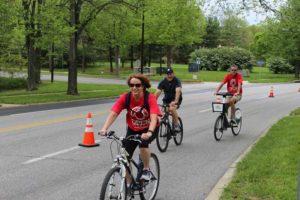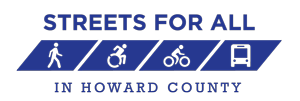The Problem: It’s Too Hard and Unsafe to Get Around Without a Car

Too many of our streets are not accessible or safe for walkers, bikers, bus riders or people with disabilities. As a result, it is too difficult for children to walk safely to school, for people to be more physically active and for people with disabilities and older adults to travel easily and independently.
- Across the county we lack sidewalks and safe intersections. In WalkHoward, the county’s draft pedestrian plan, residents identified 1,312 areas that need sidewalks.
- Out of 494 bus stops assessed in the same plan, 78 percent need landing pads and 51 percent need pedestrian lighting.
- Bicycle routes also have been historically underfunded, leading to very little progress on building projects in the county’s bicycle master plan. While county funding has significantly increased, it still falls short of neighboring counties.
- Too many people in Howard County do not have enough opportunities to be physically active. This can have serious consequences for public health.
What We Need: Complete Streets in Howard County!
Howard County needs better streets so people can walk, bike, use their wheelchair or ride the bus more safely. We need streets for all.
In fall 2019, the Howard County passed its complete streets resolution. The Streets for All Coalition continues to engage the Administration and the community to ensure projects are implemented in a timely fashion. The Horizon Foundation, a lead partner of Streets for All, sits on the county’s Complete Streets Implementation Team.
Investing in better streets and sidewalks – and completing projects on time – will ensure a future with better biking and walking and enable all people to get around easily and safely in whatever manner they choose. This will help create communities where all people can thrive.
- Complete streets are good for health, the environment at the economy.
- Street-scale improvements, such as sidewalks, bike lanes, and safe street crossings, provide more opportunities to be physically active. Engaging in daily physical activity reduces the risk of heart disease, stroke, hypertension, diabetes and some types of cancer.
- National organizations like the AARP, American Heart Association and Smart Growth America have established best-practice standards for complete streets that establish accountability, incorporate equity considerations, create transparency and ensure broad implementation.
- Other Maryland communities, like Baltimore City and Anne Arundel County, also have complete streets policies on the books and are working to make their communities more bikeable, walkable and accessible. Howard County should not fall behind.

